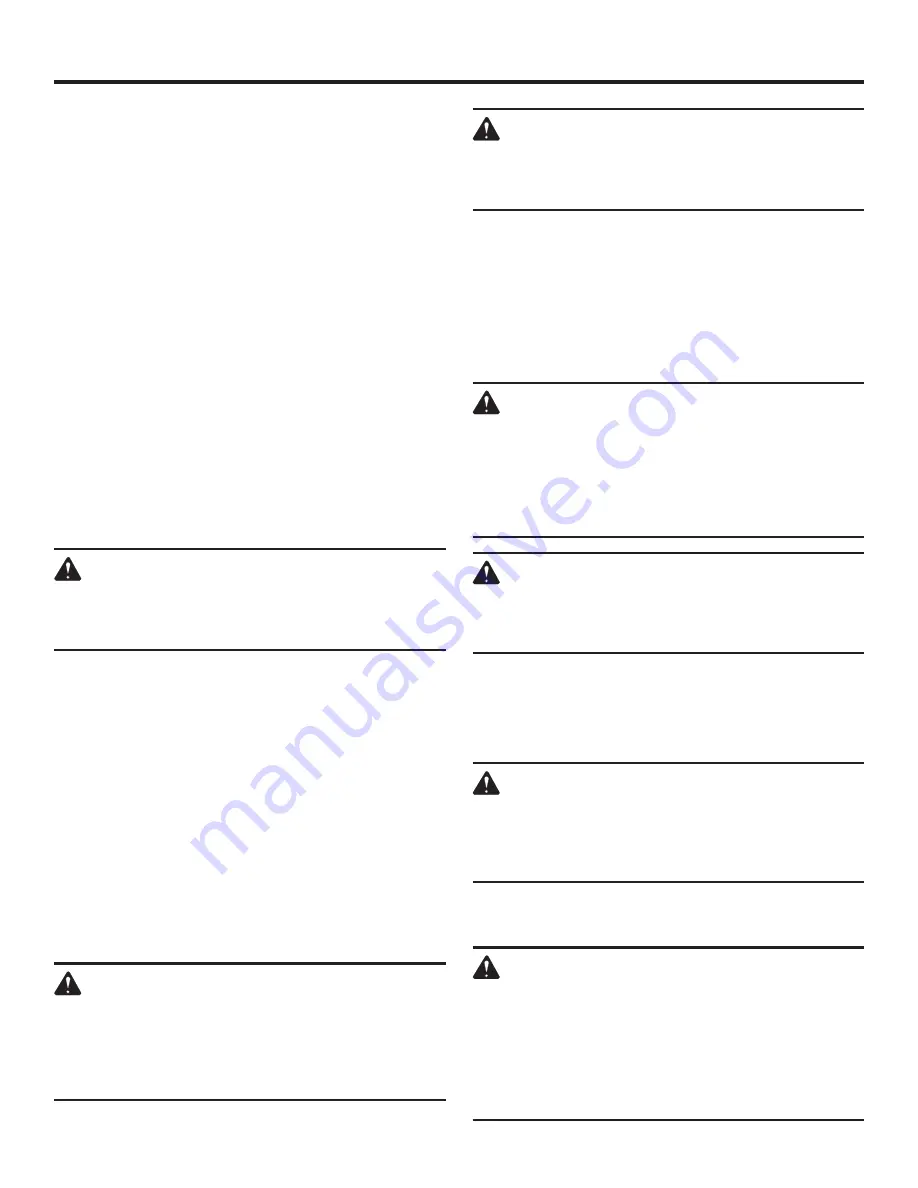
9 – English
OPERATION
PREPARING THE TOOL FOR USE
See Figure 2, page 15.
Under normal use conditions, the tool should be lubricated
before connecting the tool to an air supply. Add 30 drops
of oil into the swivel connector to lubricate the tool before
its first use. After the initial lubrication, maintain the tool by
adding oil daily. Add 10 drops once daily with minimal use, or
twice daily with heavy use. Only add oil as necessary. Excess
oil will collect inside the tool and will be visible around the
upper and lower exhaust.
Before using the tool, check the air compressor gauge to be
sure it is functioning within the proper range of 70-120 psi,
and ensure that the tool is fully operational by completing the
Required Daily Checklist
as described later in this manual.
An improperly functioning tool should not be used.
NOTE:
Always wear personal protective equipment and
observe all safety instructions when operating this tool.
NO-MAR PAD
See Figure 3, page 15.
The no-mar pad attached to the nose of the tool helps
prevent marring and denting when working with softer
woods.
WARNING:
Disconnect the tool from the air supply before
removing or replacing the no-mar pad. Failure to
do so could result in serious personal injury.
The no-mar pad for the framing nailer can be removed by
pulling it open and away from the side of the toe-nailing
claw. To replace the no-mar pad, fit it into place over the
points of the claw.
On-board storage for the no-mar pad is located on the
magazine of the tool.
ADJUSTING THE EXHAUST
See Figure 4, page 15.
The adjustable exhaust on the top cap of the tool allows
the operator to direct the exhaust according to operator
preference.
To adjust, turn the exhaust cap in the desired direction.
CONNECTING THE TOOL TO AN AIR SUPPLY
See Figure 5, page 15.
WARNING:
Disconnect the tool from the air supply before
leaving the work area, moving the tool to another
location, or handing the tool to another person.
Failure to do so could result in serious personal
injury.
DANGER:
Do not use oxygen, combustible gases or bottled
gases as a power source for this tool. The tool will
explode and cause death or serious injury.
This tool is designed to operate on clean, dry compressed air
at regulated pressures between 70 and 120 psi . The correct
air pressure is the lowest pressure that will do the job.
NOTE:
Air pressure that is higher than 120 psi may damage
the tool.
The tool and air hose must have a hose coupling that allows
all pressure to be removed from the tool when the coupling
is disconnected.
WARNING:
Always use a coupling that discharges all the
compressed air in the tool at the time the fitting or
hose coupling is disconnected. Using a coupling
that does not discharge the compressed air could
cause unintended operation and serious personal
injury.
WARNING:
Do not climb rigging or scaffolding while carrying
a tool that is connected to an air hose. Doing so
could result in serious personal injury.
Connect the tool to the air supply with a 1/4 in. female quick
connector. A 3/8 in. female quick connector may be used
in situations where a 1/4 in. supply line is not available. For
maximum tool performance, a 3/8 in. supply line and fittings
are required.
WARNING:
Disconnect the tool from the air supply before
leaving the work area, moving the tool to another
location, or handing the tool to another person.
Failure to do so could result in serious personal injury.
LOADING THE TOOL WITH NAILS
See Figures 6 - 7, page 15.
WARNING:
The tool’s driving mechanism may cycle when the
tool is first connected to the air supply. Always
connect the tool to a pressurized air supply before
loading nails to prevent injury from unintended
cycling. Always make sure the tool’s magazine
is empty at the beginning of each work session,
before connecting to an air supply.










































